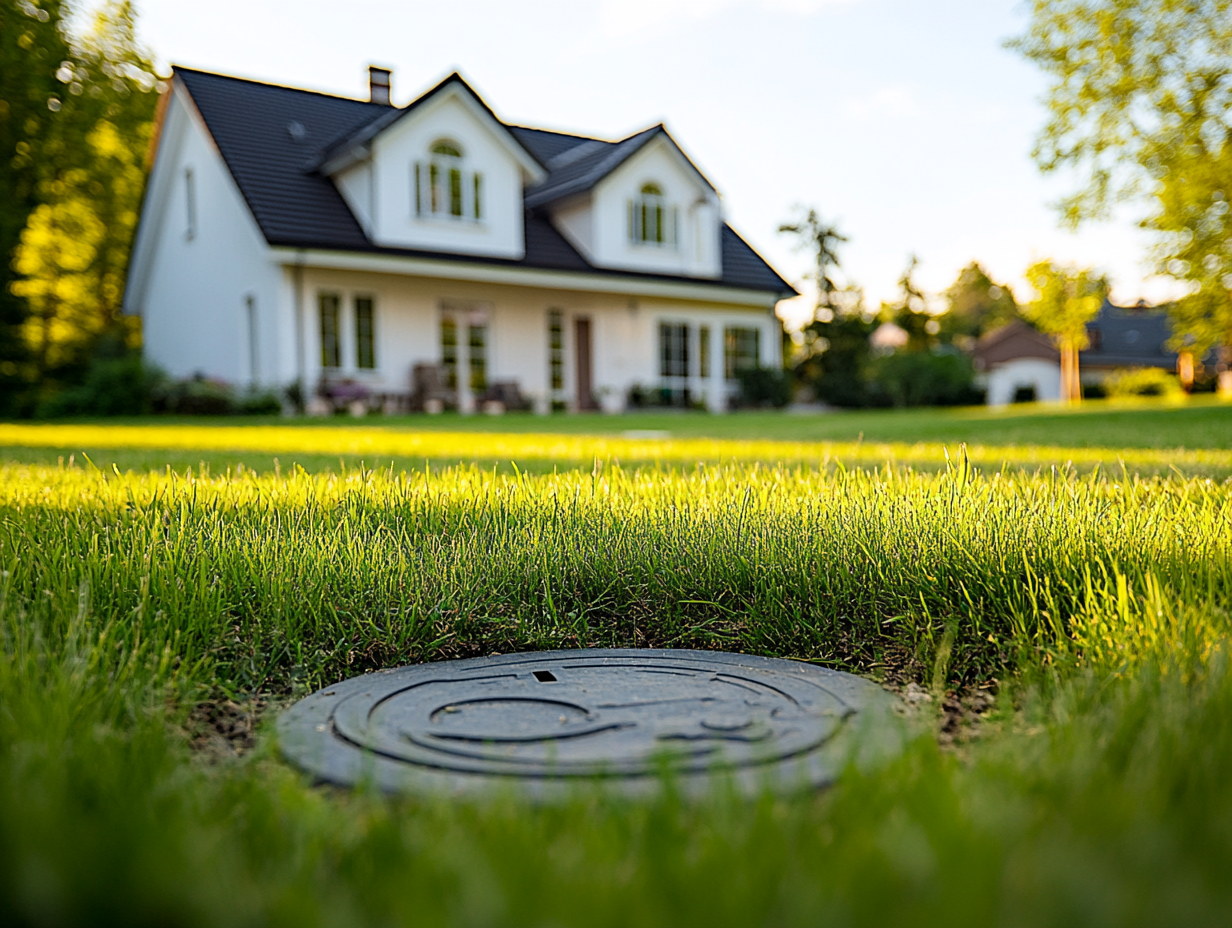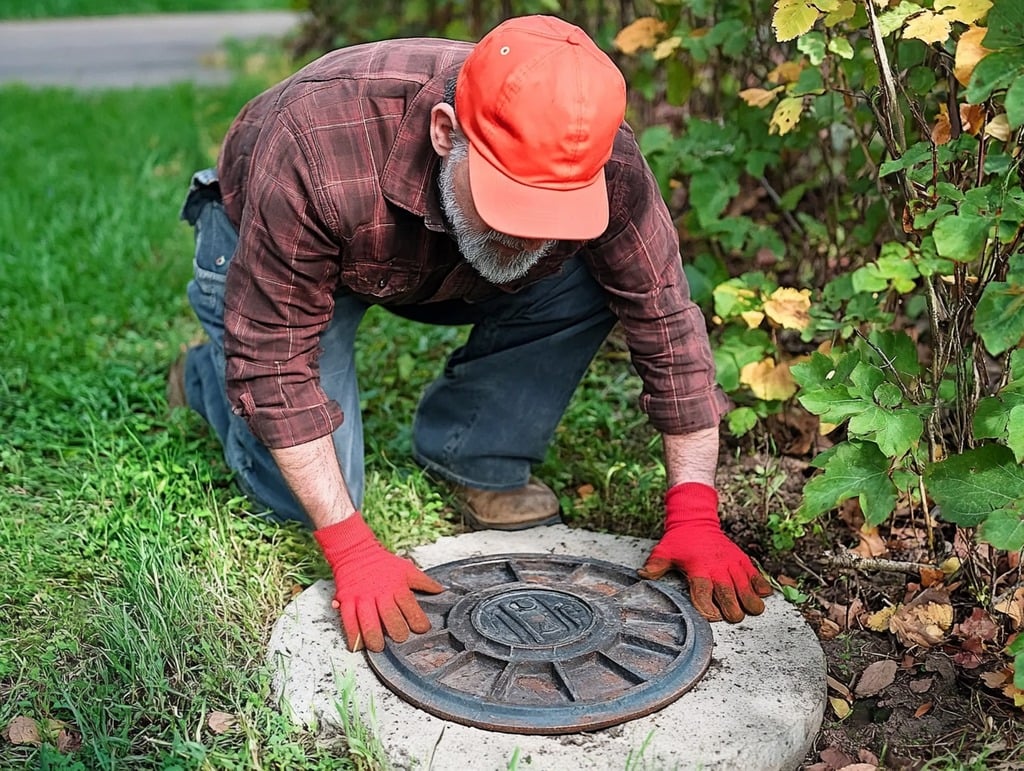When it comes to maintaining a home with a septic system, understanding how to keep your septic tank healthy is essential. Proper care can save you from costly repairs, unpleasant odors, and potential environmental hazards. Let’s dive into the basics of septic tank health, including the key do’s and don’ts to keep your system running smoothly.
What Is a Septic System?
A septic system is an underground wastewater treatment structure commonly used in areas without centralized sewer systems. It typically consists of a septic tank and a drain field. The tank holds wastewater from your home, allowing solids to settle at the bottom, while liquid effluent flows out to the drain field where it is naturally filtered by the soil.
Septic systems are a vital part of modern living in rural areas and homes not connected to municipal sewer lines. They provide an efficient way to treat and dispose of household wastewater. However, the longevity and effectiveness of a septic system depend heavily on how well it is maintained.
A standard septic system works through three primary stages:
- Collection: Wastewater from toilets, sinks, showers, and appliances flows into the septic tank.
- Separation: Inside the tank, solids settle to the bottom as sludge, while oils and lighter particles float to the surface as scum.
- Treatment: The liquid effluent exits the tank into a drain field, where soil and microorganisms filter and treat the wastewater before it re-enters the groundwater.
By understanding how these components interact, homeowners can make informed decisions about maintaining and protecting their septic systems.
The Do’s of Septic Tank Maintenance
- Do Schedule Regular Inspections
- Have your septic system inspected by a professional every 3-5 years. Regular inspections can catch small issues before they become major problems. A professional inspection involves checking the levels of sludge and scum, assessing the condition of the tank and pipes, and ensuring the drain field is functioning correctly.
- Do Pump Your Tank When Needed
- The frequency of pumping depends on your household size, tank size, and water usage. On average, tanks need pumping every 3-5 years. Regular pumping prevents excessive buildup of sludge, which can lead to clogs and system failure.
- Do Conserve Water
- Excessive water use can overwhelm your septic system. Fix leaky faucets, install low-flow fixtures, and spread out laundry loads to minimize water entering the tank. Efficient water use not only extends the life of your septic system but also reduces your water bills.
- Do Know the Location of Your Septic System
- Be aware of where your tank and drain field are located. This helps you avoid damaging them during landscaping or construction projects. Marking these areas with permanent, non-invasive markers can prevent accidental damage and save repair costs.
- Do Use Septic-Safe Products
- Choose cleaning and personal care products labeled as “septic-safe” to prevent harmful chemicals from disrupting the bacteria in your tank. These bacteria play a crucial role in breaking down waste. Opt for biodegradable soaps, detergents, and household cleaners whenever possible.
- Do Plant Grass Over the Drain Field
- Grass helps with soil stabilization and allows for proper evaporation. Avoid planting trees or shrubs with deep roots that could damage the system. Shallow-rooted plants like grasses and wildflowers are ideal for covering the drain field without interfering with the pipes below.
- Do Educate Your Household
- Make sure everyone in your household understands what can and cannot go down the drains. This includes children, guests, and any long-term visitors. Clear communication about proper septic use is a simple but effective way to maintain system health.
The Don’ts of Septic Tank Maintenance
- Don’t Flush Non-Biodegradable Items
- Avoid flushing items like diapers, sanitary products, paper towels, wipes (even if labeled “flushable”), or dental floss. These can clog your system. Even seemingly small items like cotton swabs or hair can accumulate and cause blockages over time.
- Don’t Pour Grease Down the Drain
- Grease can solidify in your pipes and septic tank, leading to blockages and costly repairs. Instead, collect grease in a container and dispose of it in the trash. A little prevention goes a long way in avoiding expensive maintenance.
- Don’t Use Additives Without Professional Advice
- Some additives claim to boost septic health, but many can harm the natural bacteria in your tank. Consult a professional before using them. Unnecessary additives can disrupt the delicate balance of your system, leading to inefficiency and damage.
- Don’t Drive or Park Over the Drain Field
- Heavy vehicles can compact the soil and damage underground pipes, disrupting the filtration process. Limit foot traffic in the area and ensure that large equipment is kept well away from the drain field.
- Don’t Ignore Warning Signs
- Pay attention to slow drains, foul odors, or wet spots in your yard near the drain field. These could indicate system failure and require immediate attention. Early intervention can save you significant time, money, and stress.
- Don’t Overload Your System with Excessive Chemicals
- Harsh chemicals from cleaning products, paint, or medications can kill beneficial bacteria that break down waste in the tank. Proper disposal methods for chemicals and hazardous materials should always be followed to protect your septic system.
- Don’t Overload Your System with Too Much Water
- Spikes in water usage, such as hosting a large party or running multiple appliances simultaneously, can overwhelm the system. Plan water-intensive activities over several days to prevent strain on the septic system.
Signs of a Healthy Septic System
A well-maintained septic system should:
- Have no noticeable odors.
- Process wastewater efficiently without backups.
- Maintain a dry and firm drain field.
Additionally, the absence of gurgling noises in your plumbing and consistent water flow through your drains are indicators of a functioning system. Regular inspections and routine maintenance contribute significantly to achieving these conditions.
When to Call a Professional
Even with the best practices, issues can arise. Call a septic professional if you notice:
- Gurgling sounds in your plumbing.
- Sewage backups inside your home.
- Persistent wet spots or odors near your drain field.
- An extended period since your last inspection or pumping.
Professionals can diagnose and address underlying problems before they escalate, ensuring the long-term health of your system. Routine consultations with a septic expert are an excellent way to stay ahead of potential issues.
Protecting Your Septic System: Long-Term Tips
- Educate Your Household: Ensure everyone in your home knows what can and cannot go down the drains.
- Be Cautious with Garbage Disposals: Use them sparingly, as they add extra solids to your septic tank.
- Monitor Water Usage: Spread out activities like laundry and dishwashing to avoid overloading the system.
- Plan Landscaping Thoughtfully: Avoid planting trees or installing hardscapes near your septic system. Design your yard to complement, not compromise, the system.
- Maintain Proper Records: Keep a log of inspections, pumping dates, and any repairs. These records can be invaluable for diagnosing issues and when selling your home.
- Be Vigilant During Seasonal Changes: Heavy rains or drought conditions can affect how your septic system operates. Adjust your water usage accordingly during extreme weather.
Final Thoughts
Caring for your septic tank doesn’t have to be complicated, but it does require consistent effort and awareness. By following these do’s and don’ts, you’ll protect your system, save money on repairs, and help preserve the environment. Remember, a healthy septic system is an investment in your home’s longevity and your family’s comfort.
If you’re unsure about your septic system’s condition or have concerns, don’t hesitate to reach out to a trusted septic professional. Proper maintenance today can prevent headaches tomorrow!
By keeping these practices in mind and staying informed, you can ensure your septic system remains in top condition for years to come. Whether you’re new to septic systems or an experienced homeowner, these principles are timeless for maintaining a well-functioning, hassle-free system.
Frequently Asked Questions (FAQ)
Q. How often should I pump my septic tank?
A. On average, a septic tank should be pumped every 3-5 years. However, this frequency can vary based on household size, water usage, and tank capacity. Consult a septic professional to determine the best schedule for your system.
Q. What are the signs that my septic system is failing?
A. Common warning signs include slow drains, gurgling sounds in your plumbing, sewage backups, foul odors near the drain field, and wet or spongy areas in your yard. If you notice any of these, contact a professional immediately.
Q. Can I use a garbage disposal with a septic system?
A. Yes, but use it sparingly. Garbage disposals add extra solids to your septic tank, which can increase the frequency of pumping. Avoid disposing of grease, coffee grounds, and non-biodegradable materials to maintain system health.







